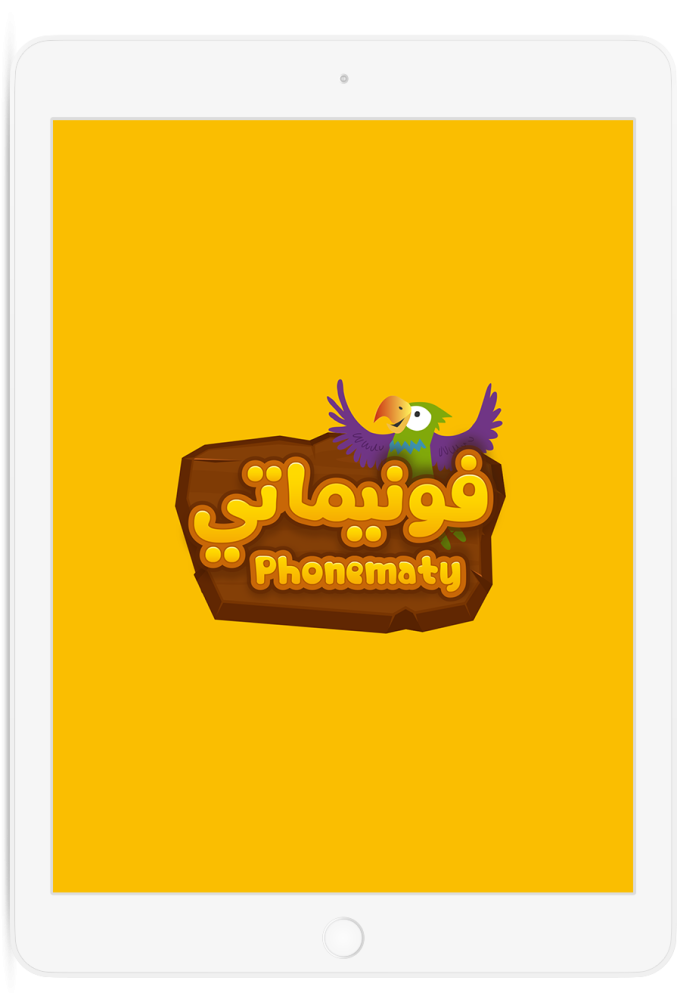Why phonemes???
Is this an Arabic word? What is this name? What does it have to do with Arabic? What does it mean?
I faced a torrent of questions and inquiries when I announced the name of the electronic application for reading and language readiness that I launched through my organization, Al-Tarbionoon, and called it Phonematic. The questioners did not calm down until I opened the Arabic dictionary of meanings and showed them the meaning of the word phoneme, which is that it is the smallest unit of audible sound in the language. Phonemes are the plural of a word. What we hear in speech is a group of small sounds that come together, and we do not hear a single letter between them. These sounds are the melody of the language that the child hears and distinguish it from other languages. It is important to start with them before teaching letters. For example, when we say the word “sun,” the first sound is not the letter “shin,” but the sound “sh” (sh). This sound is a phoneme, one of thirteen sounds for each letter of the alphabet. Arabic is made up of consonants that are exposed to several vowel sounds that change the pronunciation and determine the way of pronunciation. The skill of classifying and distinguishing these sounds and recognizing the similar and different ones in them is more important than learning the letters of the alphabet, their shape and name, spoken or written. The method of rushing to introduce the letters of the alphabet to children in kindergarten is one of the reasons that lead to learning difficulties, which are widespread in our Arab world.
Since each language has its own tone that distinguishes it from others, as well as components and connections that must be understood, and this does not happen unless the ears become accustomed to that tone and are trained to understand the components through the skills of analysis, synthesis, segmentation, integration, classification, and distinguishing some of the sound details of the heard material. Removing the alienation between the child’s ear and the language with its components, starting with the sound, then the word, then the various expressions with the tone and gesture... to raise the child’s ability to classify the heard material more consciously and accurately. Also, the auditory memory needs continuous nourishment so that the child has a sufficient balance of words with meaning in the language that he will learn in the later stages. Scientifically, the child needs to acquire a number of auditory, visual, cognitive, and perceptual skills before being exposed to a curriculum that teaches the alphabet.
We notice that Arab children acquire the colloquial language from those around them at an age when they have a tremendous innate capacity to acquire languages. The age of three is the peak of activity in the language area of the brain. Therefore, we find them suffering greatly when they enter school, as if they are learning a new language, which is unfamiliar to their hearing: classical Arabic. Therefore, we advocate the necessity of speaking it to infants, weaned children, and kindergarten children so that they become familiar with it, and this will support academic learning in the primary stage.
Preschool linguistic preparation for children is a successive system of procedures that includes goals, content, and activities that are often neglected in kindergartens. They focus on teaching letters in a traditional way that may be parrot-like at times, which makes concepts overlapping and does not build a sound foundation for the child’s linguistic memory. When we teach the child in kindergarten and say, “Ya Dalal, you, Dina, and Duaa, all have the letter ‘dāl’ and all resemble the word ‘dub’,” we are doing so, without realizing it, creating a kind of confusion in the child’s linguistic memory, as he will open a store in which he puts names with the abstract letter and the image of a bear without it meaning anything to him. When he reaches school age and is asked to recall a word with the open letter ‘dāl’, he cannot do so because his store is not properly classified, just like an untidy closet in which it is difficult to search for the required thing. It is more appropriate to say, “Ya Dalal, your name resembles the first sound of ‘dālah’, and you, Duaa, your name resembles the first sound of the word ‘dub’, while your friend Dina is exactly like the first sound of the word ‘dir’a’.” This way, we draw the child’s attention to focus on the difference in the first sound of the word, so he automatically opens three rooms in the memory, one For each voice to memorize what he learned in an organized manner that makes it easier to retrieve information from it when needed later when the academic learning stage begins.
Therefore, developing phonemic awareness, memory and attention skills, and other skills are essential for reading readiness for ages 3-5 years old. Learning, building, and establishing, while ages 6-8 years old require enriching and developing linguistic skills specific to Standard Arabic. This foundation is the cornerstone upon which the idea of “Phonematy” was based, to provide in a simplified manner more than 50 linguistic skills before reading and more than 200 educational activities and games developed to take into account the characteristics of children and meet their needs. It helps children hear the sound and learn the relationships between the components of the written language and its spoken sounds through building vocabulary and understanding, passing through the distinctive structural elements of Standard Arabic, such as femininity, masculinity, plurals, opposites, and others.
I firmly believe that my phonetics precede my words in education, and I hope I have convinced you of this, and that my phonetics is a leading Arabic platform for all the language skills necessary for reading readiness (phonetic, visual, cognitive, and perceptual), and then the alphabet.
